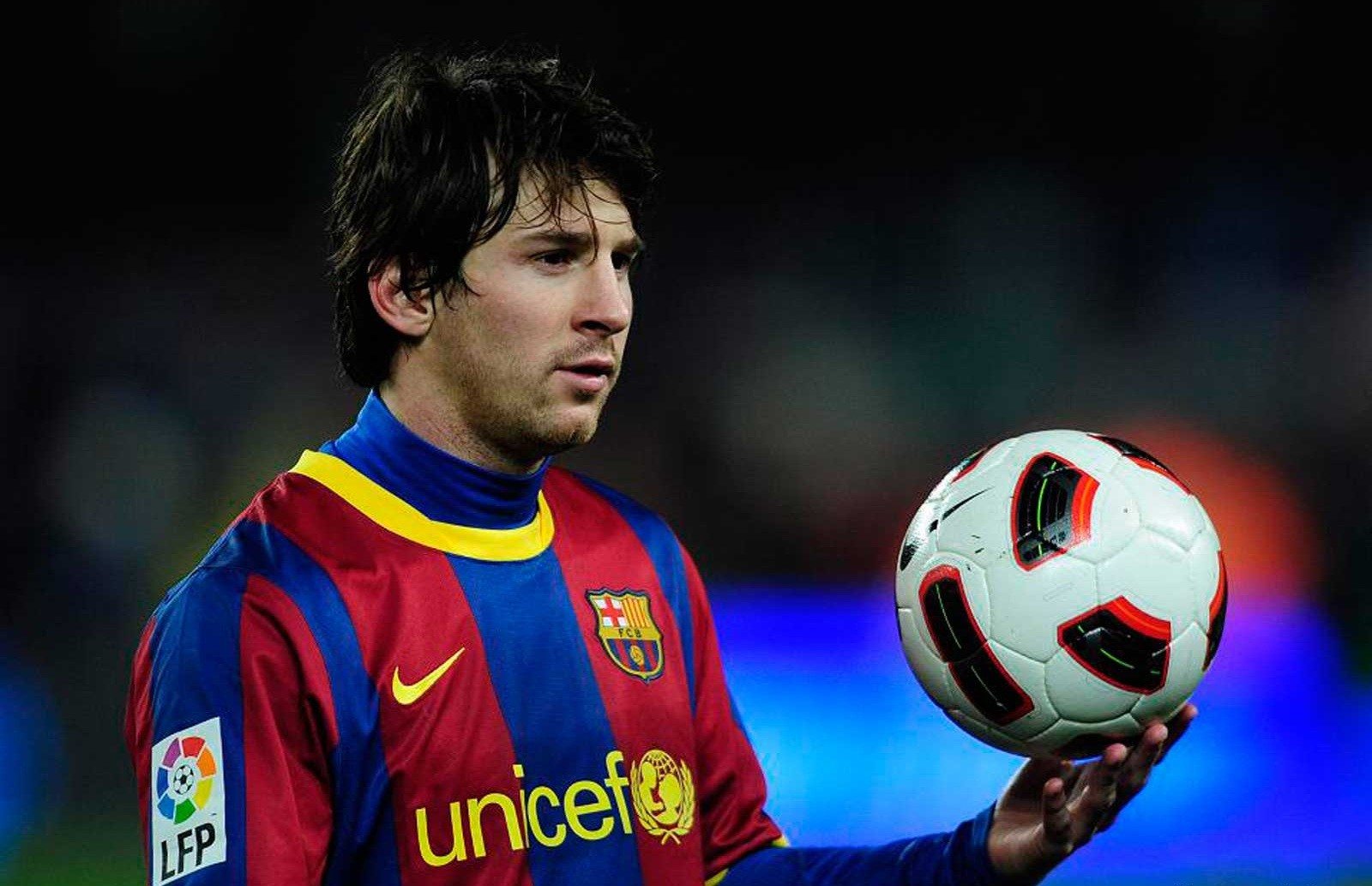
The Architects of Precision: Unpacking Football Teams with Best Passing Accuracy
In the intricate tapestry of modern football, where tactical innovation constantly reshapes the game, one fundamental element remains universally cherished and strategically vital: passing. While goals win matches, the journey to the net often begins with a meticulously executed sequence of passes. The ability to retain possession, manipulate opponents, and carve open defences hinges significantly on a team’s passing accuracy. It’s more than just a statistic; it’s a reflection of a team’s philosophy, discipline, and collective understanding.
This article delves into the world of football teams that have consistently demonstrated exceptional passing accuracy, exploring the tactical nuances, key players, and coaching philosophies that elevate them above the rest. We will examine how this seemingly simple metric underpins complex strategies and contributes profoundly to success on the pitch.
The Philosophy Behind Precision Passing
High passing accuracy isn’t an accidental byproduct; it’s a deliberate tactical choice, often the cornerstone of a team’s identity. Teams that prioritize precision passing generally adhere to a possession-based philosophy, aiming to control the tempo of the game, dictate play, and minimize turnovers.
Control and Dominance: By retaining possession, a team denies the opponent the ball, reducing their opportunities to attack. This not only serves as a form of defence but also allows the team with the ball to patiently probe for weaknesses, waiting for the opportune moment to accelerate play and penetrate defensive lines.
Rhythm and Flow: Accurate passing builds rhythm. When players are confident in receiving and delivering the ball, the team moves as a cohesive unit, creating fluid attacking patterns. This flow can disorient opponents, forcing them out of position and opening up crucial spaces.
Reduced Risk and Energy Conservation: While it might seem counterintuitive, precise short passing can actually be a low-risk strategy. Erratic long balls or ambitious dribbles are more prone to turnovers. By keeping the ball close and circulating it accurately, teams conserve energy, maintain shape, and minimize the chances of being caught out on the counter.
Building from the Back: The modern game heavily emphasizes building play from the goalkeeper and defensive line. This requires defenders and even the goalkeeper to possess exceptional passing skills under pressure, initiating attacks with accurate distribution rather than simply clearing the ball.
Beyond the Numbers: What "Best" Really Means
When discussing "best passing accuracy," it’s crucial to look beyond raw percentages. A team could have a 95% passing accuracy by simply passing the ball sideways and backward without any progressive intent. True excellence lies in purposeful accuracy – passes that break lines, move the ball into dangerous areas, and contribute to goal-scoring opportunities.
Therefore, while raw pass completion percentage is a good starting point, other metrics provide deeper insights:
- Progressive Passes: Passes that move the ball significantly closer to the opponent’s goal.
- Passes into the Final Third: Crucial for breaking down compact defences.
- Key Passes: Passes that lead directly to a shot on goal.
- Accurate Long Balls: The ability to switch play or find a forward quickly and accurately.
- Passing Accuracy Under Pressure: How well players maintain their composure and precision when harried by opponents.
The teams that consistently rank highest in overall passing accuracy often excel in these advanced metrics as well, demonstrating not just the ability to keep the ball, but to use it effectively.
The Dominators: Teams Setting the Standard
Several clubs have historically, and continue to, define excellence in passing accuracy, largely due to their unwavering commitment to a specific playing style and the presence of world-class talent.
1. Manchester City (Pep Guardiola Era)
Perhaps the quintessential example of modern passing mastery, Pep Guardiola’s Manchester City has consistently set the benchmark for pass completion rates across European football. Their "juego de posición" (positional play) is built on intricate short passing, creating numerical superiority in various zones of the pitch, and patiently probing for openings.
- Philosophy: Control through possession, patient build-up, creating overloads, and quick transitions upon winning the ball back. Every pass has a purpose, aiming to move the opponent, create space, or progress the attack.
- Key Players: Midfielders like Rodri (the deep-lying orchestrator), Kevin De Bruyne (incisive progressive passes and long balls), and Bernardo Silva (exceptional close control and link-up play) are central. Ball-playing centre-backs such as Ruben Dias and John Stones are vital in initiating attacks from deep. Even their full-backs and forwards are adept at one-touch passing and positional rotations.
- Impact: Manchester City’s passing accuracy isn’t just about keeping the ball; it’s about suffocating opponents, dictating the game’s rhythm, and ultimately creating an overwhelming number of chances. Their dominance in the Premier League and their consistent challenge in the Champions League are testaments to the effectiveness of their passing-centric approach. They regularly post season-long team passing accuracy percentages in the high 80s to low 90s, often leading Europe’s top leagues.
2. FC Barcelona (Tiki-Taka Era and Beyond)
While Manchester City represents the contemporary pinnacle, FC Barcelona, particularly during the Pep Guardiola era (2008-2012), established the gold standard for possession-based, highly accurate passing, famously dubbed "Tiki-Taka." Its roots trace back to Johan Cruyff’s Dream Team, but Guardiola perfected it with a generation of midfielders unmatched in their technical prowess and spatial awareness.
- Philosophy: Extreme possession, quick one-touch passing, intricate triangles, constant movement off the ball, and pressing high to win the ball back immediately. The goal was to disorient opponents through relentless ball circulation and then exploit the resulting gaps.
- Key Players: The holy trinity of Xavi Hernandez, Andres Iniesta, and Sergio Busquets formed the core. Xavi’s unparalleled vision and passing range, Iniesta’s dribbling and ability to break lines, and Busquets’s immaculate defensive positioning and short passing mastery were legendary. Lionel Messi’s involvement in link-up play further elevated their passing game.
- Impact: This Barcelona team redefined football, winning multiple La Liga titles and two Champions Leagues with a style that was both beautiful and brutally effective. While the current Barcelona team faces financial constraints and a rebuilding phase, the club’s DNA still emphasizes technical quality and passing, with young talents like Pedri and Gavi embodying the spirit of accurate, purposeful distribution.
3. Bayern Munich
Germany’s perennial champions, Bayern Munich, consistently rank among Europe’s elite in passing accuracy. While they might not be as dogmatically possession-oriented as Guardiola’s teams, their blend of technical quality, physical prowess, and tactical flexibility allows them to maintain high passing percentages while also being direct and devastating in attack.
- Philosophy: A pragmatic approach that values possession but also emphasizes verticality and high pressing. They are adept at building from the back but are equally capable of quick transitions and devastating counter-attacks, often initiated by precise long passes.
- Key Players: Midfielders like Joshua Kimmich (a true all-rounder with exceptional passing range) and Leon Goretzka provide both accurate distribution and dynamism. Their centre-backs, such as Matthijs de Ligt and Dayot Upamecano, are comfortable on the ball. Even their forwards are integral to link-up play.
- Impact: Bayern’s consistent domestic dominance and their multiple Champions League triumphs in recent years showcase a team that can adapt its passing game. They can patiently circulate the ball to wear down opponents, or unleash a rapid, accurate offensive thrust, making them incredibly difficult to defend against.
4. Arsenal (Mikel Arteta Era)
Under Mikel Arteta, who honed his coaching philosophy under Pep Guardiola at Manchester City, Arsenal has undergone a significant transformation, evolving into a side that prioritizes controlled possession and intelligent build-up play. Their passing accuracy has steadily climbed, reflecting a more mature and disciplined approach.
- Philosophy: Positional play, building from the back with precision, creating numerical advantages, and patiently progressing the ball through the thirds. There’s a strong emphasis on maintaining shape and quick ball recovery.
- Key Players: Martin Ødegaard (the creative hub with excellent progressive passing), Declan Rice (providing defensive solidity and accurate distribution from deep), and ball-playing defenders like William Saliba are crucial. The entire team is now drilled to be comfortable in possession, making short, incisive passes.
- Impact: Arsenal’s improved passing accuracy has been a key factor in their resurgence, allowing them to control games, create more chances, and challenge for the Premier League title. Their methodical approach to build-up play demonstrates how a clear tactical vision, combined with the right player profiles, can elevate a team’s passing statistics and overall performance.
The Role of Key Players and Coaching
It’s impossible to discuss passing accuracy without acknowledging the individuals and the guiding hand behind them.
The Midfield Maestros: Deep-lying playmakers (like Rodri, Busquets, Kimmich) are the ultimate conduits, dictating tempo and rhythm with their precise short and long passes. Box-to-box midfielders (like De Bruyne, Goretzka) add progressive and incisive passes into dangerous areas.
Ball-Playing Defenders: Modern centre-backs and full-backs are no longer just stoppers; they are crucial in initiating attacks, comfortable carrying the ball forward and making accurate passes under pressure.
The Goalkeeper as a First Passer: Sweeper-keepers (like Ederson, Ter Stegen) are vital for their ability to distribute the ball accurately, bypassing the first line of press and launching attacks from the back.
The Coach as the Architect: Ultimately, it’s the coach who designs the system, implements the training drills, and instills the philosophy that prioritizes passing accuracy. Pep Guardiola is the most prominent example, but coaches like Xavi, Julian Nagelsmann, and Mikel Arteta also embody this commitment. They demand technical excellence, tactical understanding, and unwavering discipline from their players.
Challenges and Criticisms
While high passing accuracy is generally celebrated, it’s not without its critics. The term "useless possession" often arises when teams accumulate high passing numbers without creating sufficient penetration or goal-scoring opportunities. Some argue that an overemphasis on accuracy can lead to risk-averse play, with teams opting for safe, sideways passes rather than more ambitious, line-breaking ones. Counter-attacking teams, which often have lower possession and passing accuracy, can still be incredibly effective by being direct and clinical.
However, for the teams discussed, their high passing accuracy is rarely "useless." It is a means to an end: controlling the game, tiring opponents, creating space, and ultimately, scoring goals.
Conclusion
The pursuit of passing accuracy in football is a fascinating blend of art and science. It demands individual technical brilliance, collective understanding, and a relentless commitment to a tactical philosophy. Teams like Manchester City, Barcelona, Bayern Munich, and Arsenal exemplify this pursuit, turning the seemingly mundane act of passing into a sophisticated weapon.
As football continues to evolve, the importance of precise, purposeful passing will only grow. It remains the bedrock upon which complex strategies are built, the silent language through which teams communicate their intent, and ultimately, a fundamental pillar of success in the beautiful game. The architects of precision will continue to shape the future of football, one perfect pass at a time.



